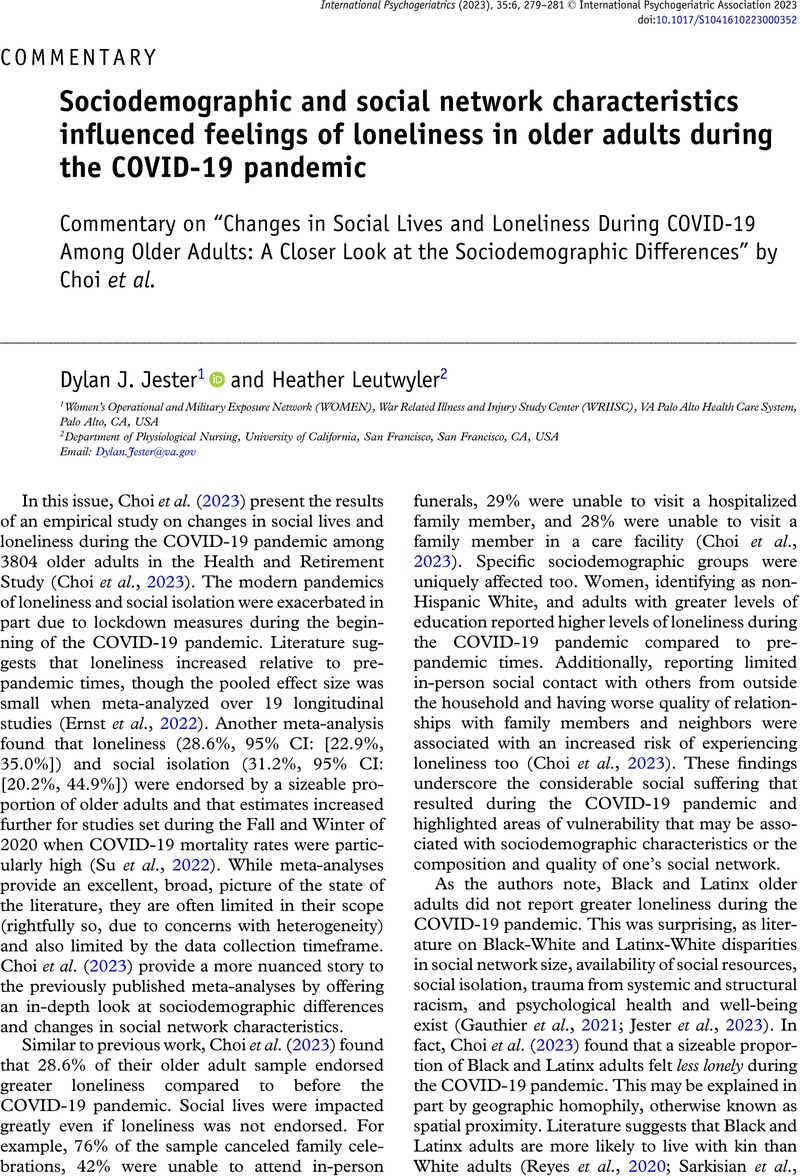Article contents
Sociodemographic and social network characteristics influenced feelings of loneliness in older adults during the COVID-19 pandemic
Commentary on “Changes in Social Lives and Loneliness During COVID-19 Among Older Adults: A Closer Look at the Sociodemographic Differences” by Choi et al.
Published online by Cambridge University Press: 13 April 2023
Abstract

- Type
- Commentary
- Information
- International Psychogeriatrics , Volume 35 , Special Issue 6: Issue Theme: Loneliness in Older Adults , June 2023 , pp. 279 - 281
- Copyright
- © International Psychogeriatric Association 2023
References
- 1
- Cited by


